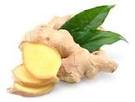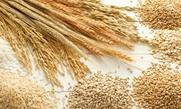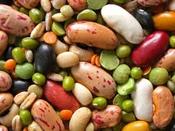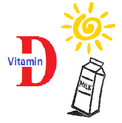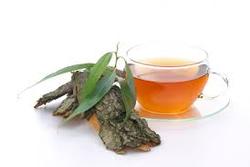Sickle cell anemia is a type of anemia . What is anemia exactly? It is when hemoglobin, an iron rich protein that carries oxygen in your blood, is either deficient or there are not enough red blood cells, which results in decreased oxygen to the tissues in your body. Sickle cell anemia is a genetic disorder and consists of abnormal hemoglobin which is called hemoglobin S. As normal red blood cells are shaped like discs, hemoglobin makes them sickled or appear S shaped. This results in sticky red blood cells resulting in the blockage of blood flow. Which results in decreased oxygen to your tissues and results in pain and causes damage to your organs. Normal red blood cells live for 120 days whereas in SCD they live for 10-20 days and the bone marrow, which makes red blood cells cannot replace them fast enough. Sickle cell anemia is an inherited disease and that is a lifelong struggle.
One of the main struggles is the pain crises associated with sickle cell disease and their treatment. There are simpler and more natural methods for treating the pain and inflammation associated with SCD. As follows:
One of the main struggles is the pain crises associated with sickle cell disease and their treatment. There are simpler and more natural methods for treating the pain and inflammation associated with SCD. As follows:
GINGER
Some more excellent natural remedies include the roots of ginseng, Angelica, wild yam and black cohosh. These are rich in anti-inflammatory steroids. When using these herbs, twenty to thirty drops made from fresh or dry roots will help with sore and painful joints. Sipping ginger syrup or applying a warm ginger poultice will help with pain and inflammation. These are alternatives to steroidal drugs that have a negative effect on our immune system and can lead to osteoporosis.
Some more excellent natural remedies include the roots of ginseng, Angelica, wild yam and black cohosh. These are rich in anti-inflammatory steroids. When using these herbs, twenty to thirty drops made from fresh or dry roots will help with sore and painful joints. Sipping ginger syrup or applying a warm ginger poultice will help with pain and inflammation. These are alternatives to steroidal drugs that have a negative effect on our immune system and can lead to osteoporosis.
BROMELAIN AND PINEAPPLE
Pineapple, who new? So pineapple, yum, contains an enzyme called bromelain which reduces inflammation and pain. It is helpful in osteoarthritis and knee pain. So there's a delicious alternative to pills and tablets.
Pineapple, who new? So pineapple, yum, contains an enzyme called bromelain which reduces inflammation and pain. It is helpful in osteoarthritis and knee pain. So there's a delicious alternative to pills and tablets.
WHOLE CRACKED GRAINS
As we have learned from past experience it has become well known the impact of over processed food and its negative effects. So what happens, is when our food gets processed, the natural elements are depleted. For example vitamin C is decreased in canned fruits and which is an important dietary component. The point being we need more whole grains or more natural food (not flour based products), as with their nutritional purpose they aid in reducing inflammation.
Types of whole grains that are anti-inflammatory are brown rice, basmati rice, wild rice, buckwheat, barley, quinoa and steel cut oats. As whole grains are digested slowly, they reduce the frequency of spikes in blood sugar which otherwise promote inflammation or pain.
As we have learned from past experience it has become well known the impact of over processed food and its negative effects. So what happens, is when our food gets processed, the natural elements are depleted. For example vitamin C is decreased in canned fruits and which is an important dietary component. The point being we need more whole grains or more natural food (not flour based products), as with their nutritional purpose they aid in reducing inflammation.
Types of whole grains that are anti-inflammatory are brown rice, basmati rice, wild rice, buckwheat, barley, quinoa and steel cut oats. As whole grains are digested slowly, they reduce the frequency of spikes in blood sugar which otherwise promote inflammation or pain.
BEANS & LEGUMES
Beans.. black beans, anasazi and chick peas as well as lentils are rich in nutrients. They contain folic acid, magnesium, potassium and soluble fiber. Nutrients such as folic acid and vitamin B12 are essential for our blood cells and deficiencies in them can contribute to developing anemia. These foods contain a low glycemic load and have anti inflammatory properties. Whether you cook them, or make them into spreads like hummus.
Beans.. black beans, anasazi and chick peas as well as lentils are rich in nutrients. They contain folic acid, magnesium, potassium and soluble fiber. Nutrients such as folic acid and vitamin B12 are essential for our blood cells and deficiencies in them can contribute to developing anemia. These foods contain a low glycemic load and have anti inflammatory properties. Whether you cook them, or make them into spreads like hummus.
VITAMIN D
It is an important part of our diet and is found in everyday dairy products as well as is naturally fed into us from the sun. It is very accessible. Vitamin D regulates calcium and phosphate levels in our body which are regulators of bone development. As is known we need vitamin D to help build strong and healthy bones. Got milk?
A number of studies have shown that deficiencies in vitamin D are associated with increased levels of chronic pain. One study showed that individuals with low levels of vitamin D needed almost twice as high a dose of pain killers as those without. This can help with bone and joint pain. It's as simple as getting your vitamin D levels checked. So simple!
It is an important part of our diet and is found in everyday dairy products as well as is naturally fed into us from the sun. It is very accessible. Vitamin D regulates calcium and phosphate levels in our body which are regulators of bone development. As is known we need vitamin D to help build strong and healthy bones. Got milk?
A number of studies have shown that deficiencies in vitamin D are associated with increased levels of chronic pain. One study showed that individuals with low levels of vitamin D needed almost twice as high a dose of pain killers as those without. This can help with bone and joint pain. It's as simple as getting your vitamin D levels checked. So simple!
WILLOW BARK
Salicylic acid is one of the main components of willow bark. Salicylic acid, in its synthetic form, is also known as aspirin! So every time your eating aspirin your eating the bark from a willow, pretty cool? Willow bark can be used for headaches, toothaches and arthritic aches. It also won't have any adverse effects on your stomach. This is a great substitute for anyone who needs some aspirin. Who knew tree bark was such a pain reliever?
Salicylic acid is one of the main components of willow bark. Salicylic acid, in its synthetic form, is also known as aspirin! So every time your eating aspirin your eating the bark from a willow, pretty cool? Willow bark can be used for headaches, toothaches and arthritic aches. It also won't have any adverse effects on your stomach. This is a great substitute for anyone who needs some aspirin. Who knew tree bark was such a pain reliever?
